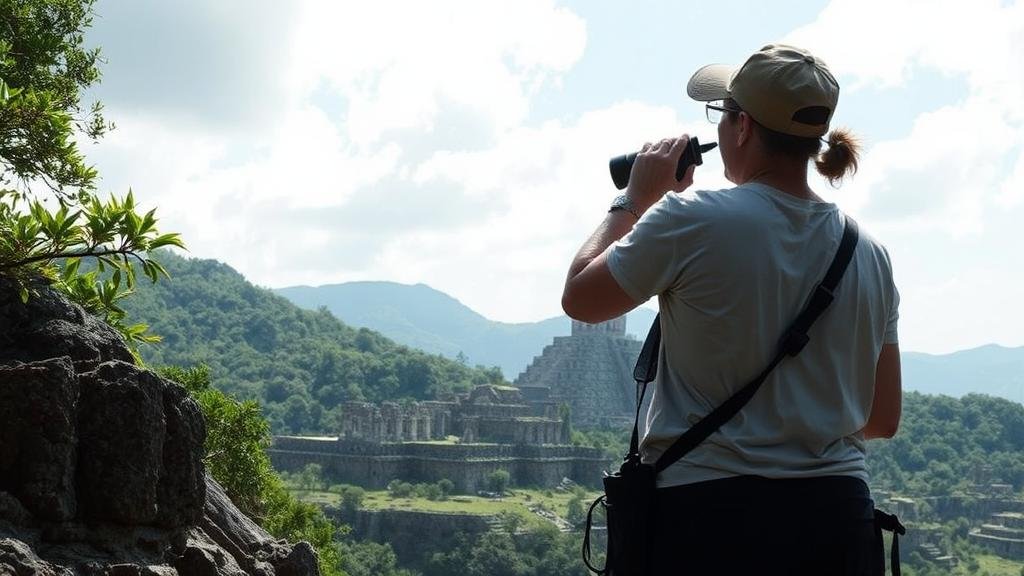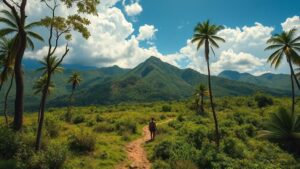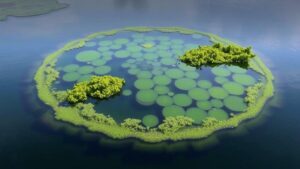Lost city exploration as a tool for understanding pre-Columbian cultures.
Lost City Exploration as a Tool for Understanding Pre-Columbian Cultures
The exploration of lost cities has played a crucial role in unraveling the intricate tapestry of pre-Columbian cultures across the Americas. As archaeologists push the boundaries of what is known, they continue to discover ancient urban centers that shed light on sophisticated societies that thrived long before European contact. This article delves into the significance of these discoveries, the methodologies employed in their exploration, and the insights gained about the people who inhabited these once-thriving locales.
Historical Context and Significance
Lost cities are remnants of complex civilizations that often demonstrated advanced socio-political structures, architectural prowess, and vibrant cultural expressions. For example, the uncovering of Machu Picchu in Peru, credited to Hiram Bingham in 1911, provided profound insights into the Inca Empires sophistication. Similarly, the exploration of the ancient city of Tikal in Guatemala revealed that it was a major political and cultural center of the Maya civilization from around 200 to 900 AD.
According to UNESCO, there are over 1,000 archaeological sites in Mesoamerica that are yet to be fully studied. Each site is a potential reservoir of knowledge that may challenge or confirm existing historical narratives about these pre-Columbian cultures.
Methodologies in Lost City Exploration
The strategies utilized in exploring lost cities have evolved significantly, integrating advanced technologies with traditional archaeology. Key methodologies include:
- Ground-Penetrating Radar (GPR): GPR allows archaeologists to create images of subterranean structures without excavation. For example, GPR has been used effectively at sites like Caracol in Belize, revealing pyramids and causeways below the surface.
- LiDAR (Light Detection and Ranging): This aerial mapping technique recently transformed our understanding of Maya cities in the rainforest. For example, the use of LiDAR in 2018 uncovered over 60,000 structures in a previously impenetrable area of Guatemala.
- Dendrochronology: The study of tree rings can provide timeline data relevant to construction timelines. This is evident in the dating of structures within the Ancestral Puebloan sites in the Southwestern United States.
Impact on Understanding Pre-Columbian Cultures
Lost city explorations have provided invaluable insights into the daily lives, economies, and belief systems of pre-Columbian peoples. For example, findings from the lost city of Teotihuacan, which peaked around 600 AD, reveal intricate trade systems. Analysis of artifacts indicates that Teotihuacan was a major hub for obsidian, utilized extensively in tool-making and trade.
Research also highlights social complexities, as seen in the city of Chan Chan, the capital of the Chimú civilization in Peru. Excavations revealed monumental architecture and extensive irrigation systems indicative of advanced agricultural practices and societal organization around 900 AD.
Real-World Applications of Lost City Insights
Understanding pre-Columbian cultures through lost city exploration has implications beyond historical curiosity. Essential applications include:
- Cultural Heritage Preservation: Knowing more about ancient civilizations aids in preserving their legacies, shaping heritage conservation policies for sites like Palenque, Mexico.
- Modern Urban Planning: Lessons learned from the environmental management practices of ancient societies can inform contemporary sustainable city planning. This is particularly relevant in the context of climate change.
- Education: Dissemination of findings enriches educational curricula, fostering a deeper appreciation of indigenous cultures and histories among students.
Conclusion and Actionable Takeaways
The exploration of lost cities serves as a powerful tool for understanding the complexities of pre-Columbian cultures. integration of technology in archaeological practices not only fuels discovery but also reshapes our historical narrative. As new sites are uncovered, the story of the Americas prior to European contact becomes clearer, emphasizing the ingenuity and resilience of its indigenous peoples.
For those interested in engaging with this field:
- Consider supporting archaeological organizations that focus on the preservation of lost city sites.
- Engage with educational resources to learn more about pre-Columbian cultures.
- Participate in local discussions or events that feature the findings from lost city explorations.
By actively participating in these avenues, individuals can contribute to a greater understanding and appreciation of the rich history that predates modern society.



